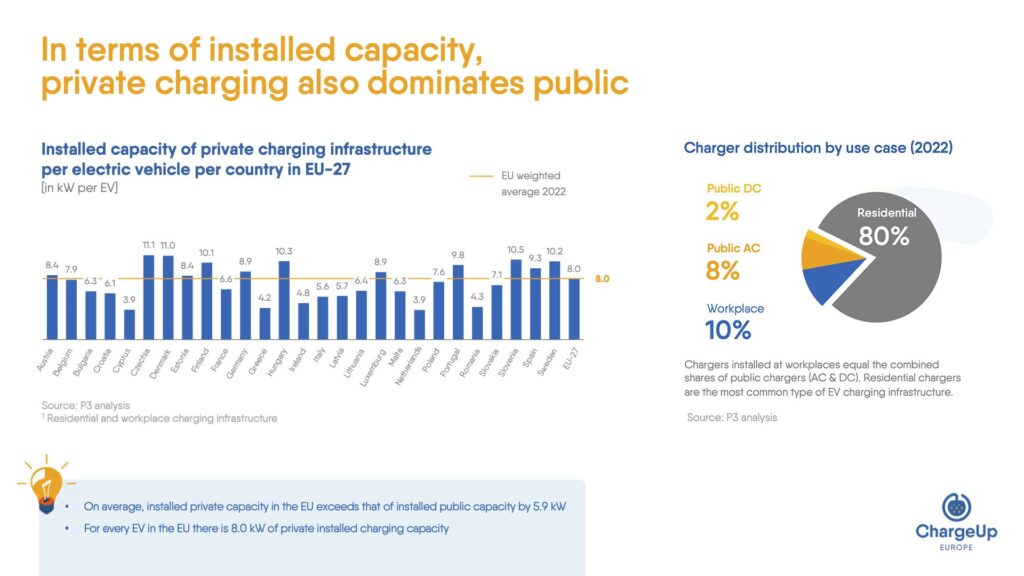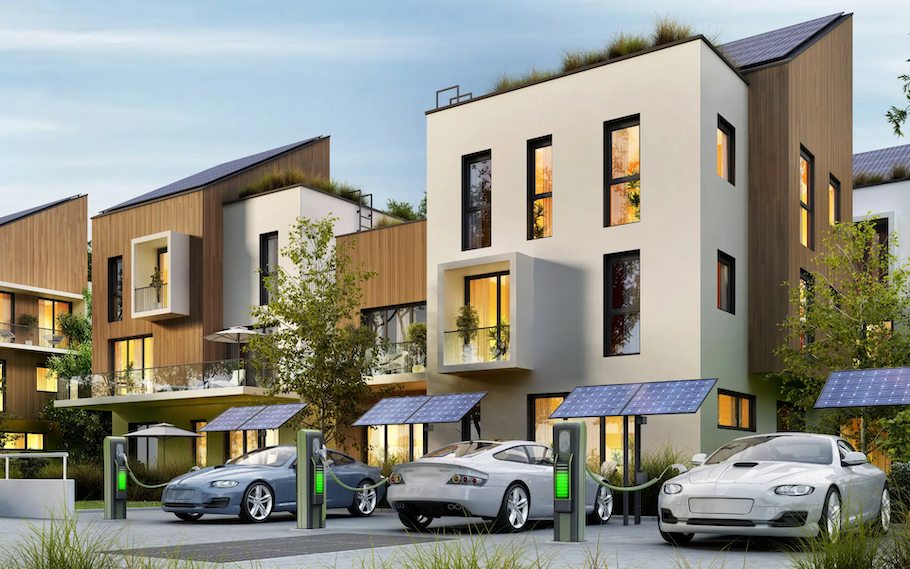On May 27th, a new era in European sustainability began with the entry into force of the Energy Performance of Buildings Directive (EPBD), which must be adopted by all European Union (EU) Member States by 30 May 2026, and promises to reduce energy consumption in buildings.
What does this mean for electric mobility?
To enable the transition, it is crucial to accelerate the deployment of charging infrastructure for electric vehicles (EVs) to reach the anticipated growth of EV fleets on EU roads.
Given that a significant portion of charging is expected to occur in buildings, the revised EPBD complements the Alternative Fuels Infrastructure Regulation (AFIR) with requirements for the installation of stations and pre-wiring in buildings and adjacent parking areas, both at home and in the workplace.
Also, the revised directive requires nations to simplify and expedite the installation process, removing obstacles for apartment buildings.
It is noteworthy that, in terms of installed capacity, private charging exceeds public charging.
On average, private capacity surpasses public capacity by 5.9 kilowatts, and for each EV, there are 8.0 kilowatts of private installed charging capacity.
In fact, residential devices are the most common type of EV charging infrastructure, accounting for 80 per cent of the distribution of chargers.
Furthermore, according to ChargeUp Europe, chargers installed at workplaces match the combined total of public chargers, both alternating current and direct current.

The total stock of charging infrastructure in the EU-27 countries is projected to increase to almost 35 million charging points by 2030.
Notably, residential charging will continue to comprise the majority of the available infrastructure, accounting for 79 per cent, followed by workplace charging at 15 per cent.
Although the number of public AC devices will more than quadruple, their share will decrease from eight to four per cent by 2030.
Meanwhile, fast charging will see significant growth, reaching approximately 500,000 charging points by 2030, though this will represent only 1.4 pe rcent of the overall market.

It is worth mentioning that the directive proposes a new requirement for charging points to support smart charging and, where possible, bidirectional charging, in line with the Renewable Energy Directive.
Smart charging allows vehicles to be charged when energy prices are low or when renewable energy is abundant, and in the future, it will enable electricity to be fed back into the grid, using the car’s battery as storage.
This technology facilitates the integration of renewable energy sources like wind and solar into the grid, contributing to the decarbonization of the energy system.
On the other hand, bidirectional charging offers numerous benefits for both EV owners and the energy system as a whole.
In terms of cost optimization, EV users can charge their cars during periods of low demand and low electricity prices, and discharge energy during peaks in demand and high prices.
Not only does this help to save on energy bills but also allows for additional income by selling stored energy back to the grid.
Moreover, it significantly supports the electricity grid.
Electric vehicles can act as a distributed energy source, providing electricity during peak demand periods and helping to balance the grid load.
By releasing stored energy during high-demand times, the need for additional generation from less efficient and more polluting peaking power plants is reduced.
Additionally, the integration of renewable energy sources, such as solar and wind, is facilitated because their energy can be stored in car batteries and used when production from these sources is low, allowing for greater penetration of renewables in the energy mix.
Furthermore, EVs equipped with this technology can provide electricity to homes and buildings during power outages, enhancing resilience in emergencies.
In combination with domestic solar systems, EVs can form part of microgrids, allowing homes or communities to be more independent of the main grid.
Environmentally, this system contributes to reducing greenhouse gas emissions and other pollutants as well, by optimizing energy use and facilitating greater integration of renewables.
Additionally, using EVs as distributed storage can reduce the need to build new energy generation infrastructure, many of which are based on fossil fuels.
Read more: V2G, V2B, or V2H? gridX predicts the dominant force in bidirectional charging








